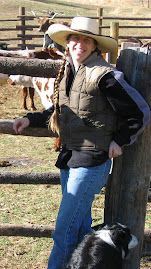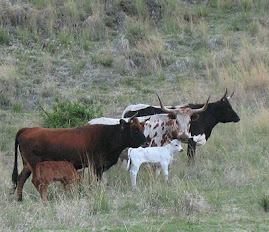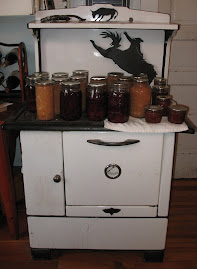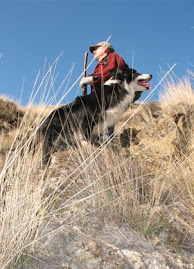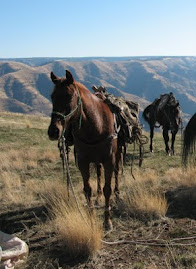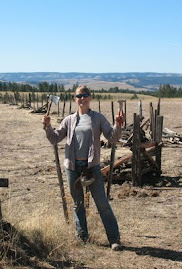Yay. The cows are on the summer range. It's always a good feeling to make the transition from Horse Creek to the Zumwalt Prairie and have the herd turned out for the season.
 |
| Dawson Hale, almost four |
Dawson, Mike and I took the first leg and got them started up from the bottom. It was a warm day, but the cows still travelled pretty good. We walked a lot, bringing the pairs up the road, and then Dawson rode for while.
I said, "Do you want to ride double or do you want Grandma to lead you?"
"I don't need you to lead me. I can ride by myself," he said. "Mama says if I don't hold onto the reins I have to get off." Good advice.
When we got to Log Creek we left Chester and Bird with the horse trailer and hiked up after the cows to the first gate. We cleared trail as we went. Mike cut brush and poison oak and thistles with shovel and machete and I attacked the blackberry vines with a pair of loppers. Dawson "whacked weeds" with a stick.
 |
| Coming back down Log Creek |
Our original plan was for Mike and I to push the cows on up the next day, but then Mike got an offer to do some more work in Mongolia. By the next morning we were saying goodbye in the Walla Walla airport before I headed back to Joseph.
Gabe and Cammie and Dawson met me in the driveway with truck and trailer, horses loaded, ready to finish the job. We drove out to the canyon rim and Gabe and I rode off the top, gathering the herd out of the basin and pushing them back up. We lucked out with cooler temperatures that made the climb easier for the cows and calves.
Once we topped out, Cammie took over for Gabe, the two of us riding the next four hours to the road pasture. The weather took a turn and within an hour, the temperature had dropped and it was spitting rain. Dawson rode double, first with Mom and then Grandma, before the cold and rain drove him into the warm pick-up with Dad.
 |
| On top, Sara, Cammie and Dawson |
We continued to make good time and reached the road pasture well before dark. Gabe said he thought we could make it all the way in a couple more hours. He was right, the cows probably could have made it, but I couldn't.
My gloves and boots were soaked through and my face was frozen from the last hour of wind-driven sleet. "I've got to get in the pick-up and warm up," I said, teeth chattering. We called it a day and drove home through the storm.
 |
| Last day, Gabe and Bird with Kodee on the Zumwalt |
The next morning we had an easy few hours ride to the pasture gate. Gabe and I finished out the job, avoiding McClaran cattle that had just been turned out in the 400 acres.
 |
| "Hidden" elk calf |
There were cow elk all over the place and we rode right by one calf, folded into the grass below the trail.
 |
| Punch - "We did it!" |
It was really nice to close the gate after the last cow, knowing the herd was settled for the summer. Even Punch seemed happy.
As we rode back to the road, I said I hoped it would rain when we needed it, that the ponds would last, that the storms, when they came, wouldn't burn up the prairie or the canyon.
And I thought of Mike on his long flight west to Mongolia. Come home safe I thought; the cattle made it to the summer range.
From Sara at Magpie Ranch, home of Bunchgrass Beef



















































